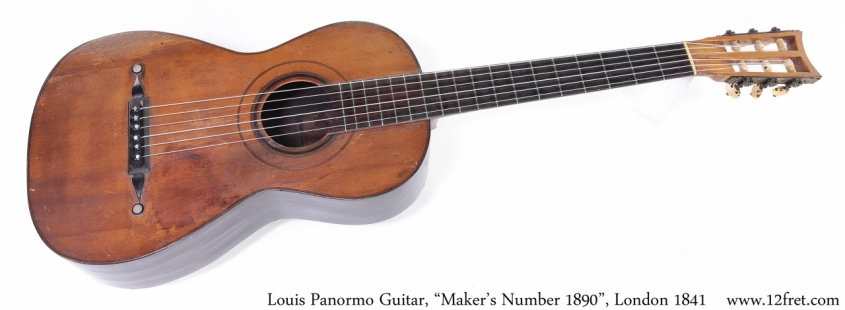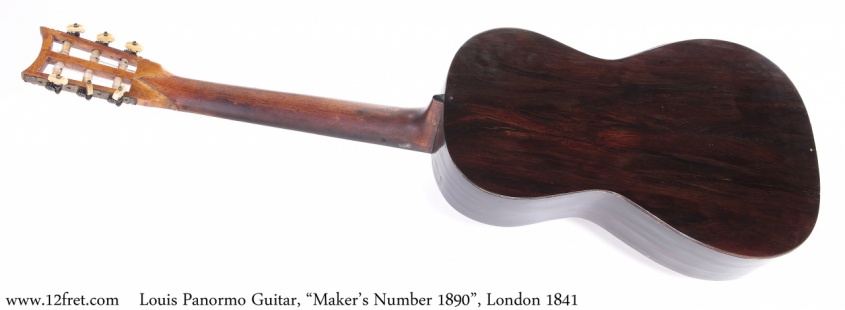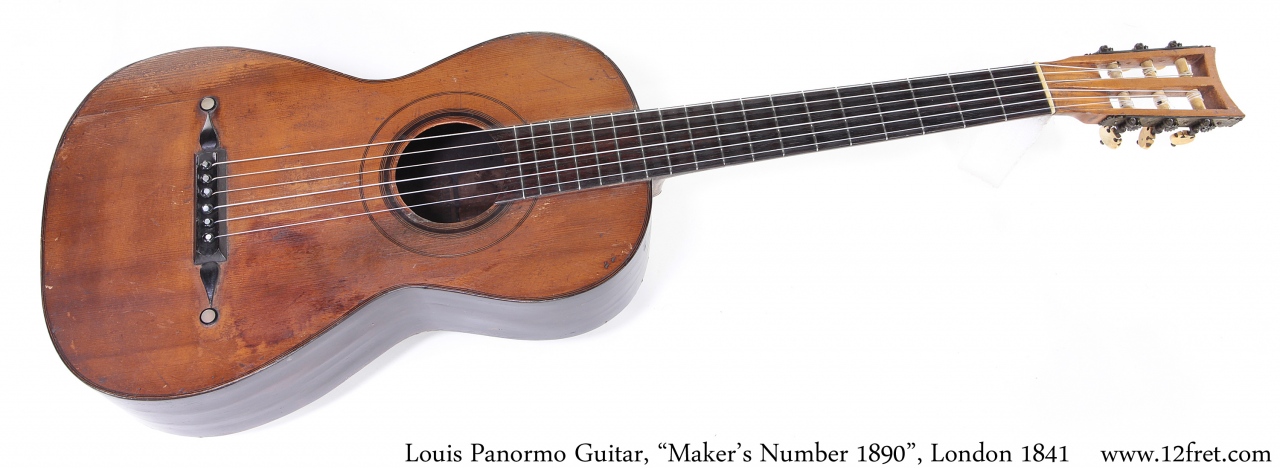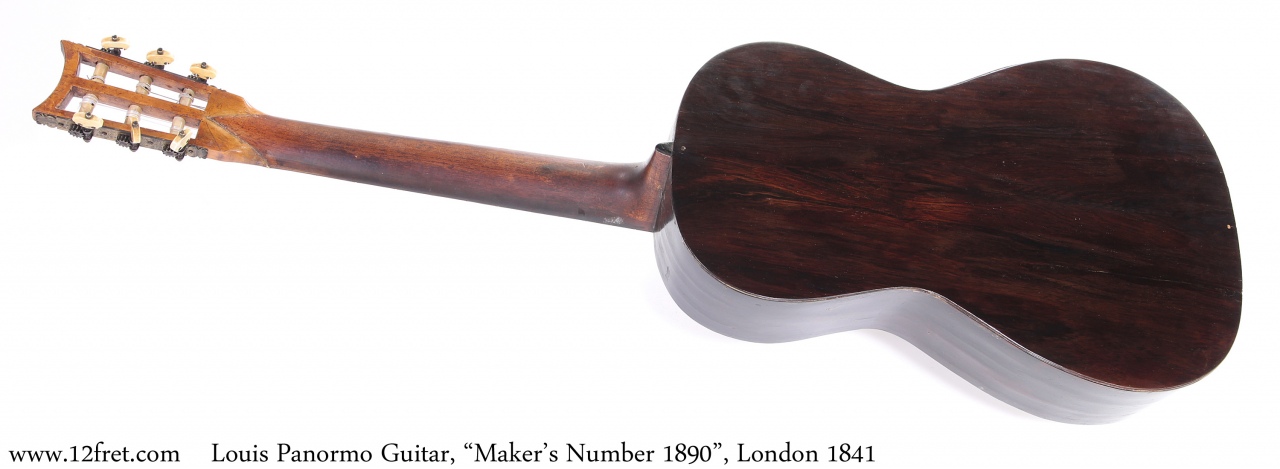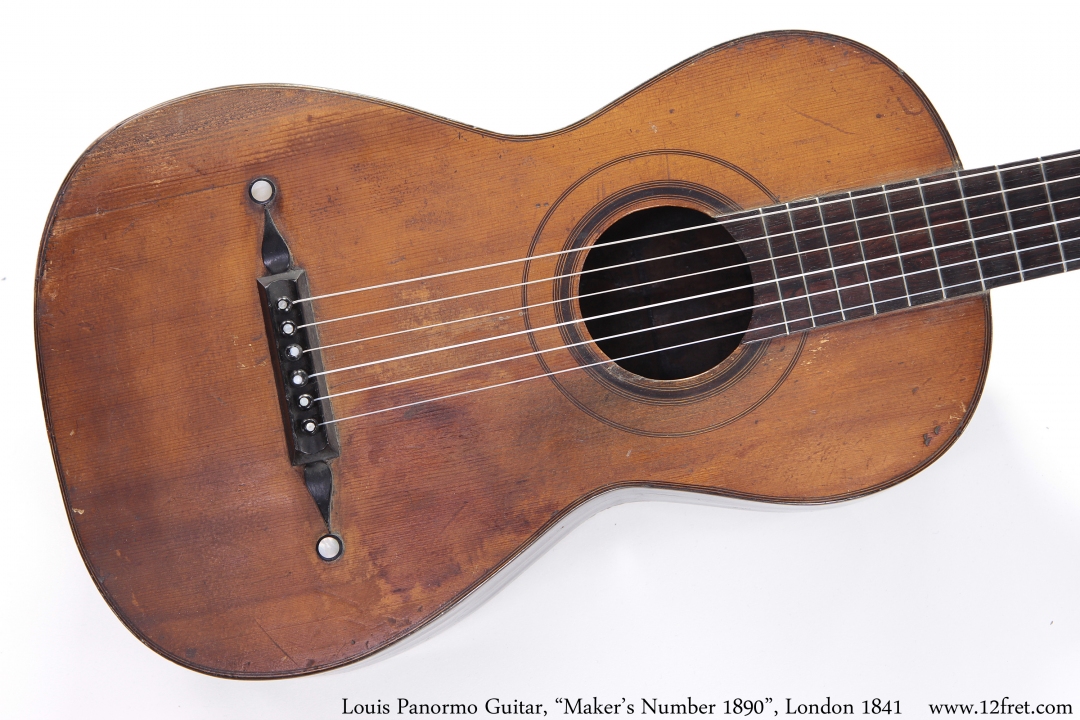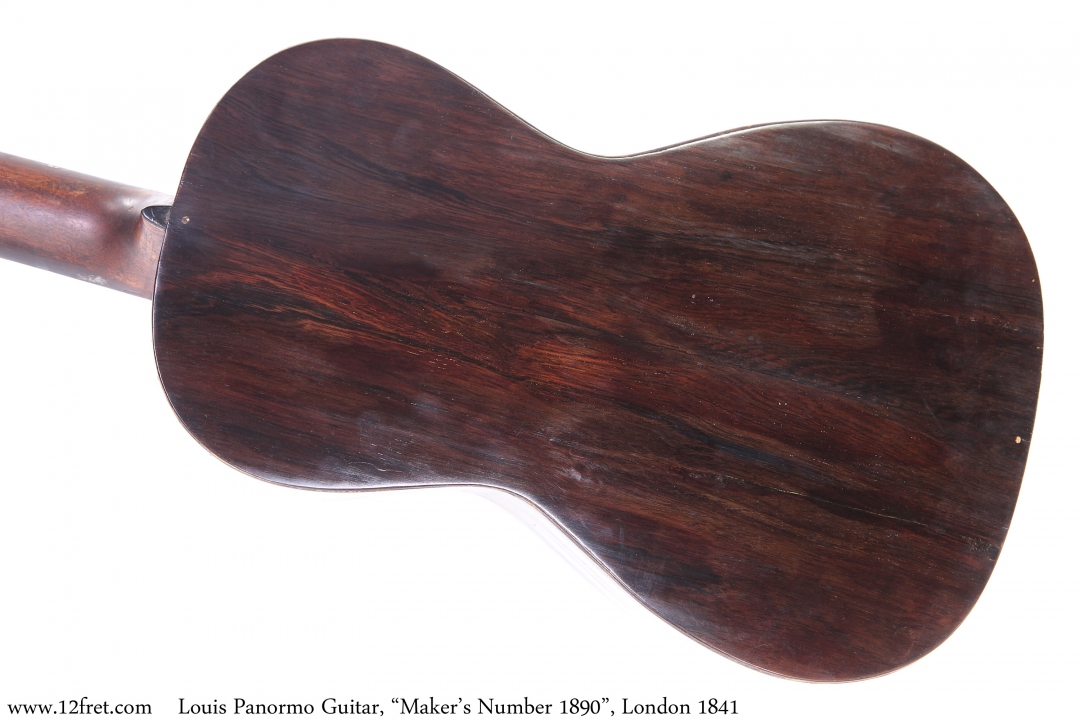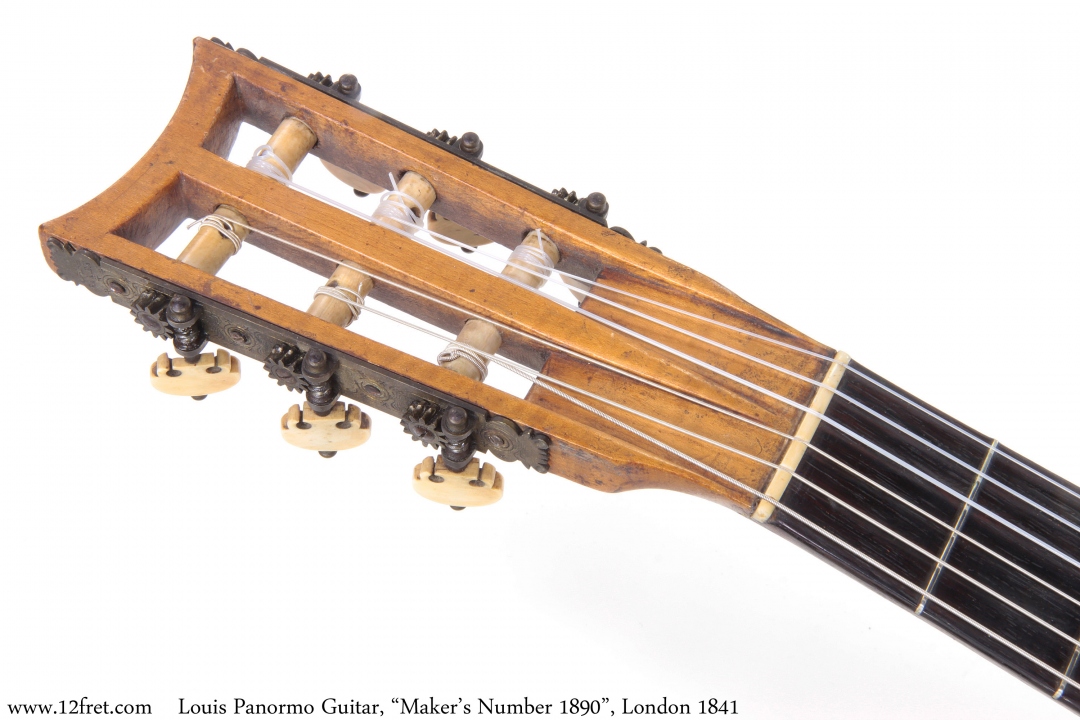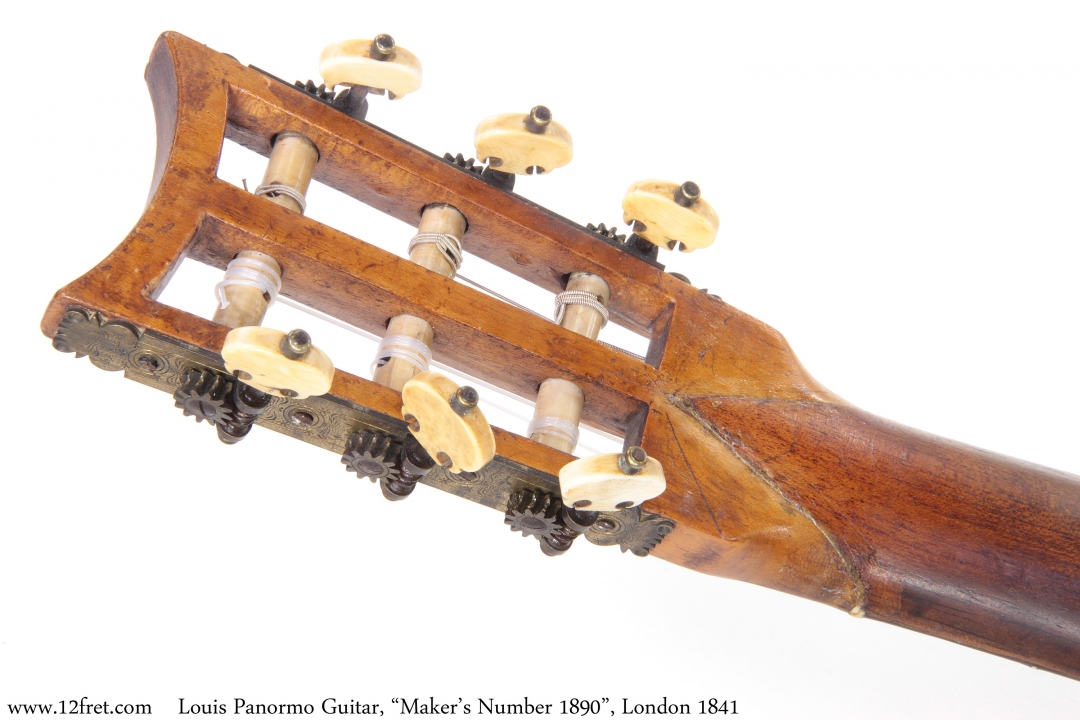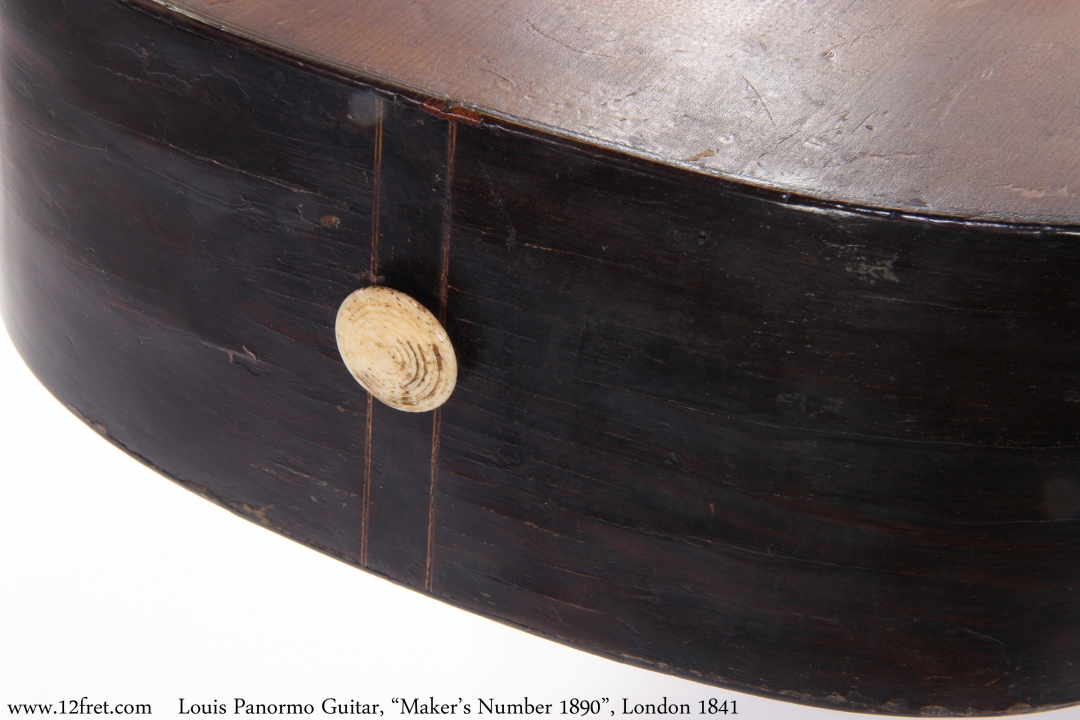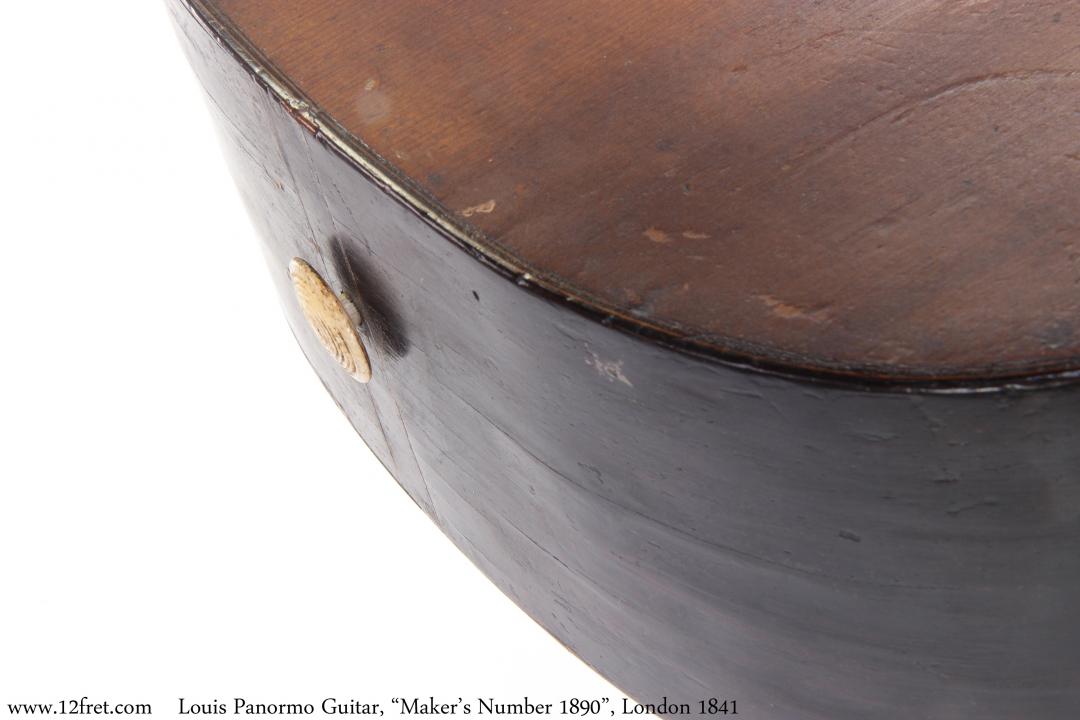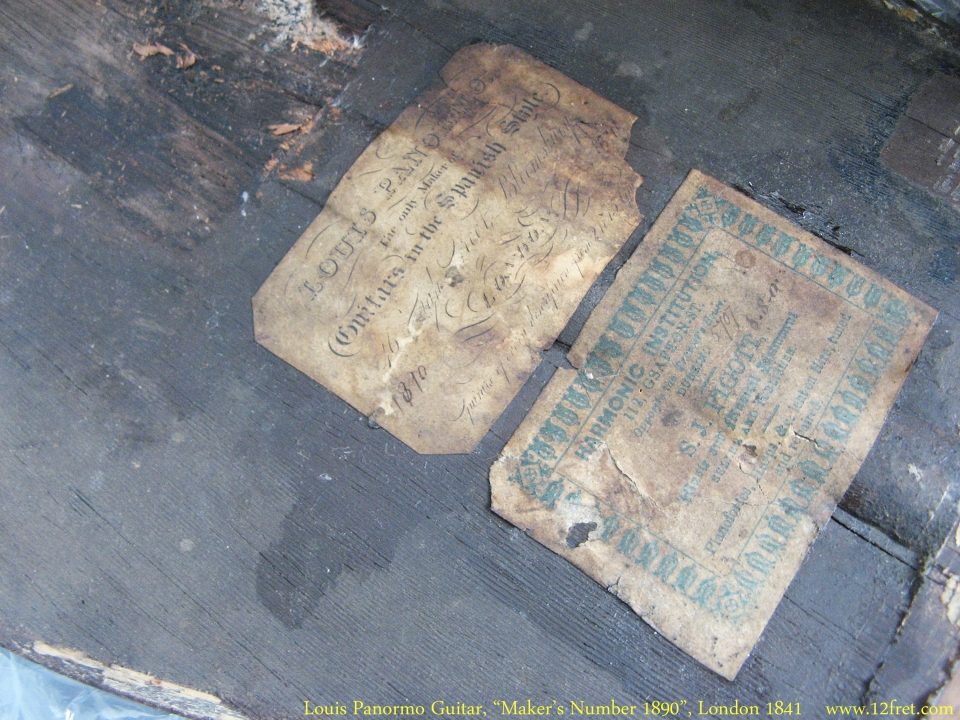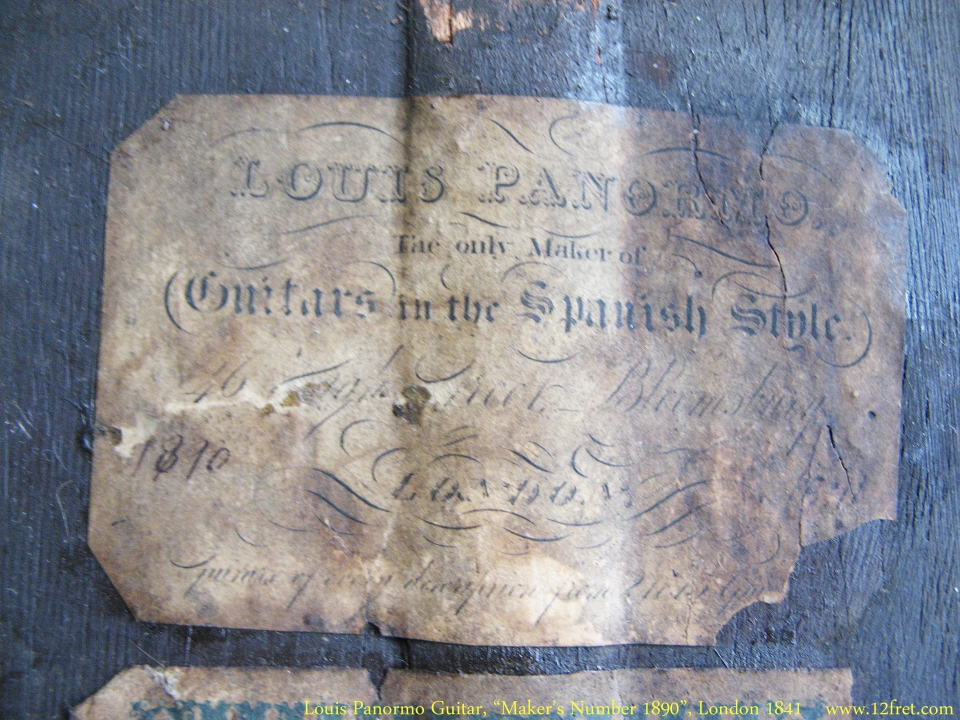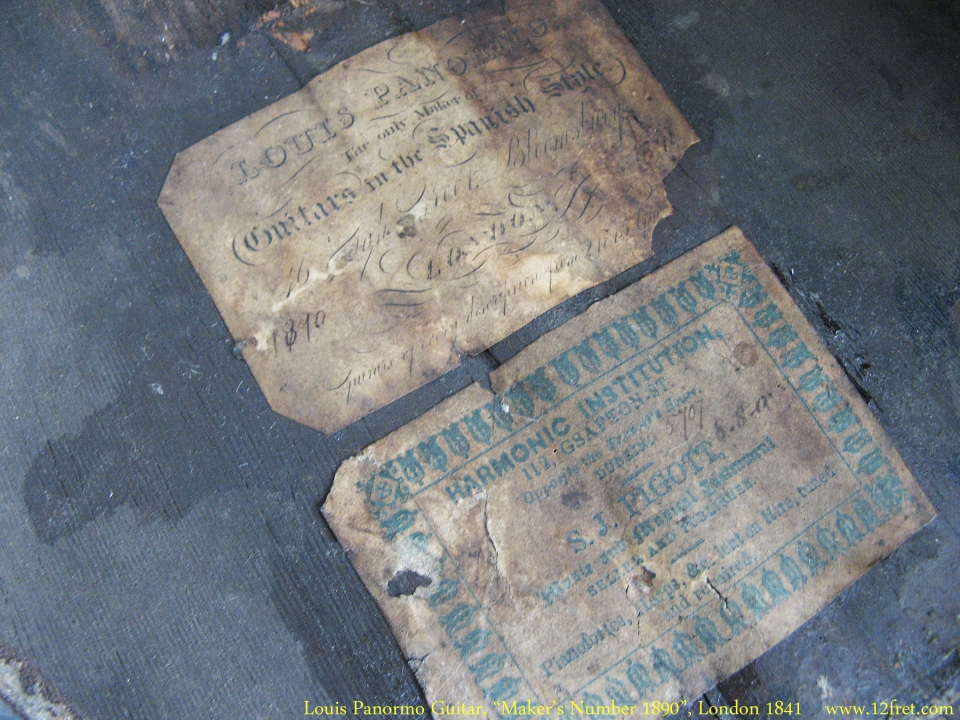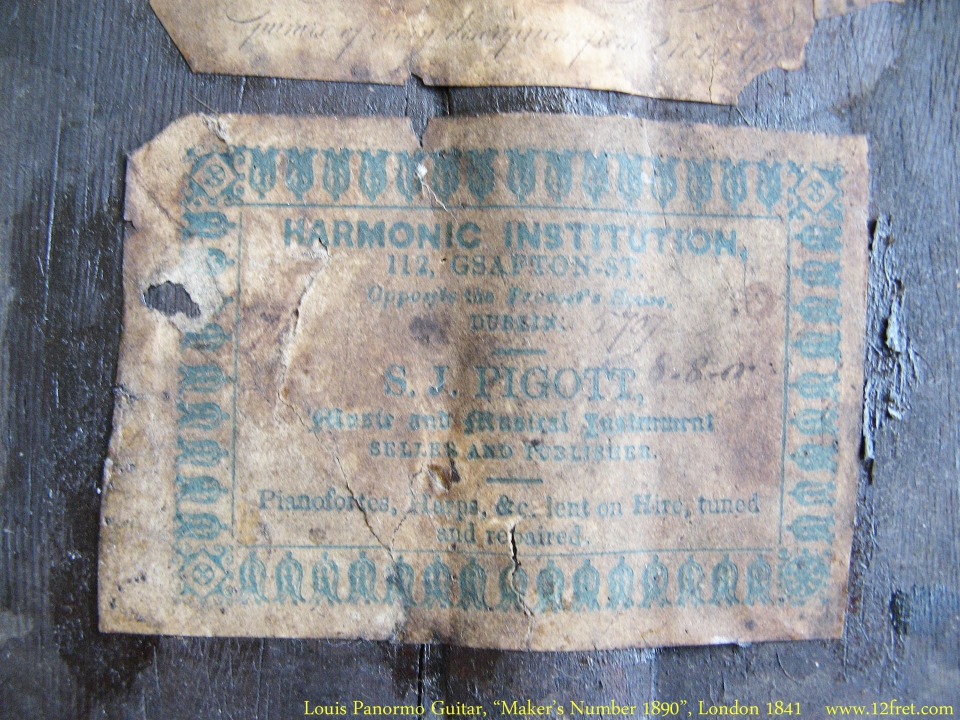Brand: Panormo
Instrument Categories: Antique and Romantic, Guitars, SOLD
The item shown here has sold and is no longer available. We are presenting it for historical and reference purposes. To view items currently available for sale, please visit our ecommerce site at https://shop.12fret.com. For permission to re-use any of these materials, please contact us at info@12fret.com
This is one of our all-time favourites – a Louis Panormo guitar from 1841 with original, period-style coffin case and in fully playable condition!
Louis Panormo was born in 1784, one of four sons of violin-maker, Vicenzo Panormo (1734-1813) who emigrated to England from Sicily. Vincenzo’s father was an apprentice of the Maestro himself: Antonio Stradivari.
Louis became the most famous and respected of the Panormos, though all four brothers and nephews built guitars and violins for several decades, while others became respected musicians.
Louis’ workshops occupied various addresses in the Soho area of London from 1819 to 1854. His guitars were ground-breaking designs and were highly sought-after by performing guitarists across Europe.
This lovely example of a Louis Panormo guitar was built in 1841 in London, England and it has a sweet and balanced tone, as do all Panormo guitars that I have seen. It is easy to see why Panormo guitars were in such demand in the 1830s, 40s and 50s.
This Louis Parnormo guitar is remarkably light-weight and one immediately notices how the entire guitar resonates in sympathy with the plucked strings. The slim Cuban Mahogany neck with fitted Maple head is fretted with bar frets and the action is very light and easy to play. The shape of the peghead is unique to the Panormo family and instantly identifies any guitar from one of their workshops.
The Panormo-style, Baker geared tuners are typical of most Panormo Workshop-built guitars. They are remarkably smooth feeling tuners; I am amazed at how intricate they are considering they were made with primitive foot operated lathes, drills and hand tools of the period.
The Louis Panormo guitar body is typically Panormo: a spruce top, braced with 7 fans and 2 harmonic braces, slipper foot heel, 3 back braces, rosewood back and sides and an ebony pin bridge with linear ebony mustaches fitted with pearl lozenges and eyes. The large end-pin is typical of the superb work one sees on a Panormo.
The guitar came to us in fully intact but rough condition and had not been played for many decades. Master-Luthier Alistair Miller, undertook the restoration; removed the back and repaired numerous cracks, reassembled and completed a light, sympathetic restoration of the French polish. It remains as close to original as I could hope for.
When the French-polish was fully cured, I recommissioned and setup the guitar and was thrilled to hear it sound and play as it should. I prefer to fit Romantic Era guitars with Aquila Alabastro Light, Nylgut strings; they give the closest feel, tension and tone to what the guitar would have offered when newly strung in 1841.
While apart, I undertook the cleaning and restoration of the soundhole labels. The labels were stained dark with age and much of the text was obscured. Once cleaned, using museum-restoration techniques the text became surprisingly legible. Slow work…a bit of cleaning each day for several weeks.
Both labels, described in detail below, were transcribed when the back was off the guitar and more easily read in natural daylight: I’ve struggled with some of the more faded text.
The Primary Label is a standard engraved, copper-plate printed label and reads as follows:
>>>>>>>>>>>>>>>>>>
Louis Panormo
The only maker of
Guitars in the Spanish Style
46 High Street Bloomsbury
1890 London 1841
Guitars of every Description from
2 to 15
>>>>>>>>>>>>>>>>>>
Louis Panormo moved to 46 High Street in 1830 and built at this address until 1849. The date of 1841 is written freehand in India Ink on the right side of the label. On the opposite side, the number “1890” is appears, also in freehand. These numbers are described as the “maker’s number”, now commonly referred to as a serial number.
Guitars of every Description from 2 to 15 – refers to model names; Model 2, Model 3, Model 4 etc.
>>>>>>>>>>>>>>>>
Then the second label which was applied circa 1890.
This guitar was already 50 years old at this time and no doubt seen plenty of use and was restored in a shop owned by S.J. Pigott in Dublin. As was commonly done by violin repairmen, the label of the workshop was also added.
It is interesting to note that Mr Pigott’s music shop also had a rental department; “Pianofortes, Harps &c. lent on Hire”. The more things change, the more they stay the same.
>>>>>>>>>>>>>>>>>>
Harmonic Institution
112 Gsapton St.
Opposite the Brown’s House
Dublin 5.707
S.J. PIGOTT, 8.8.0.
Music and Musical Instrument
Seller and Publisher
————–
Pianofortes, Harps, &c. lent on Hire, tuned
and repaired.
>>>>>>>>>>>>>>>>>>>>>>
The case supplied with this Louis Panormo guitar is original or correct-to-period. The hinges and hooks are intact. The handle is brown Bakelite and most likely added in the 1920s. it does not look out of place.
Originally, the Panormo cases were lined with a bright yellow felt-wool which quickly became moth eaten and no doubt that is why it was relined. It now is lined with thin blue velvet. A search for a local upholstery specialist, might turn up a craftsman who can restore the interior to “original”.
Grant MacNeill, Classical Guitar Specialist, The Twelfth Fret
- Model: Louis Panormo Guitar
- Year: 1841
- Finish Natural
- Class: Vintage
- Serial Number: Maker's Number 1890, built 1841 in London England
- Country of Origin: England
- Condition: Good
- Date Posted: 08/12/2021
- This instrument has been sold
- Including original Hard case
- Instrument Weight: 3.96lbs 1.8kg
- Scale Length: 25in 635mm
- Nut Width: 1.803in 45.80mm
